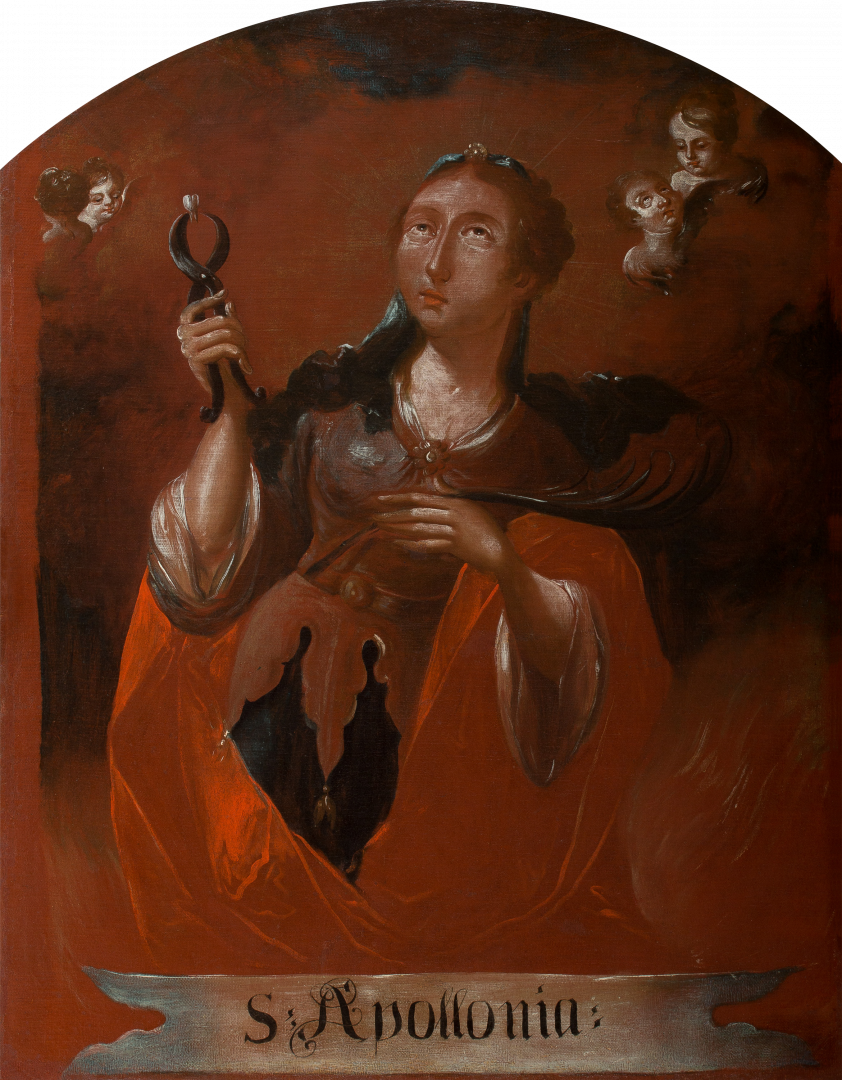Hall 1
Saint Apollonia
Unknown artist
Saint Apollonia, 18th century
oil on canvas, 94x72 cm; unmarked
Fine Arts Collection, Inv. No.: 53.225.1.
The fictitious or idealized portrait of Saint Apollonia was most likely commissioned by the Church, similarly to many other works of art from the Baroque period. The purpose of these artworks was to provide both religious and social renewal as well as further representation for Catholicism within the framework of counter-reformation efforts.
The efforts to restore the Catholic world could be felt in Hungary as well by the large-scale construction endeavours of the Church. These buildings, both new and old, required several artworks. Although the most important tasks were given to highly skilled foreign artists, Hungarian masters were also provided with multiple tasks which were far smaller in scope.
The painting depicting Saint Apollonia is an excellent example of the Baroque period’s sacred art, particularly the subgenre which focuses on the cult of saints. The painter followed the conventions of iconography when depicting the saint and her attributes. Therefore, we see Saint Apollonia holding pliers and teeth in her hands, with red flames in the background. Apollonia was executed in Alexandria in the 3rd century. Persecutors had knocked her teeth out before she was burned at the stake, therefore she is considered to be the saint for people suffering from toothache. In more recent times, she is regarded as the patroness for dentists.
The painting was added to the collection of the museum during the collectivisation of the Minorite monastery of Miskolc.
Andrea Pirint
